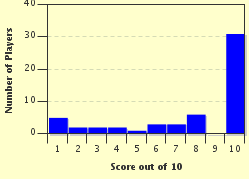
Mother of the King (or Queen) Trivia Quiz
Although the mothers of most British monarchs held the position of either queen regnant or queen consort, there were quite a few who were never granted such a grand title. Can you match up these mothers with their majestic offspring?
A matching quiz
by Fifiona81.
Estimated time: 4 mins.
